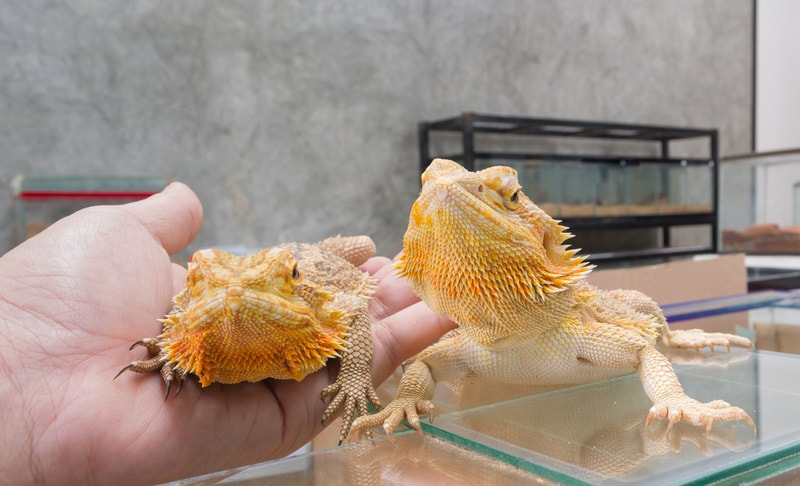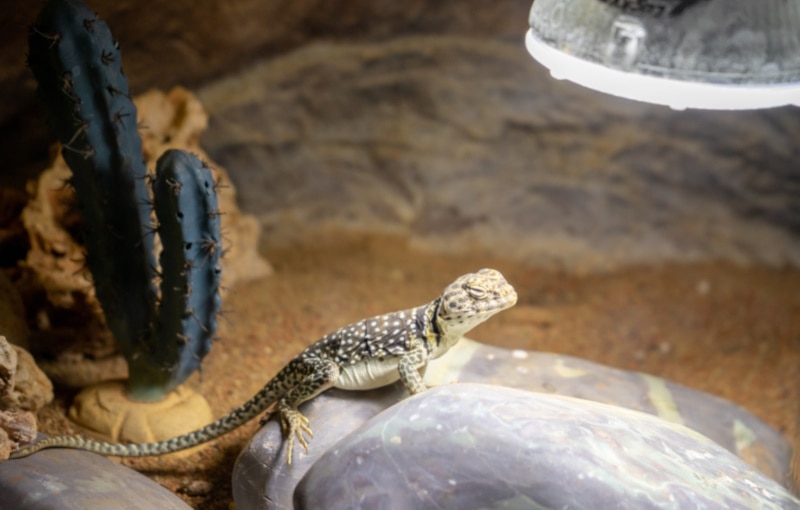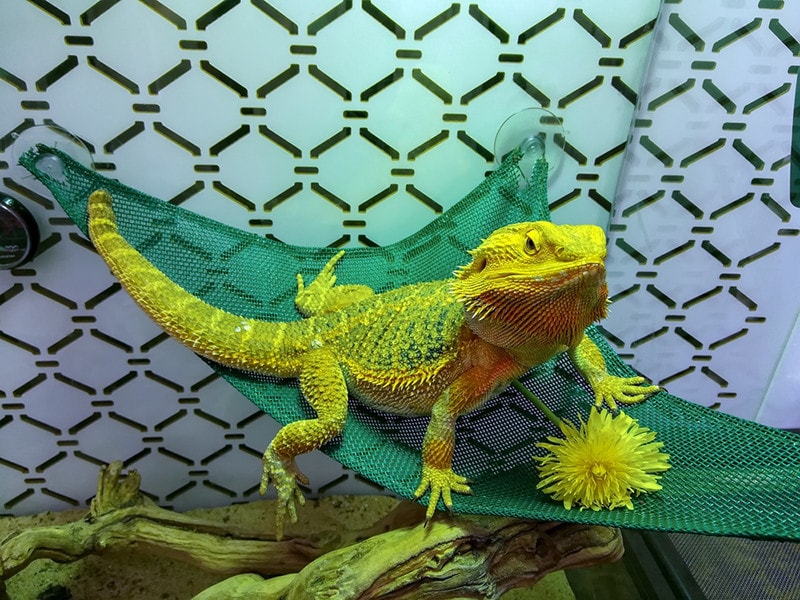Leather Back Bearded Dragons: Facts, Pictures, Habitat & Care Guide

Updated on
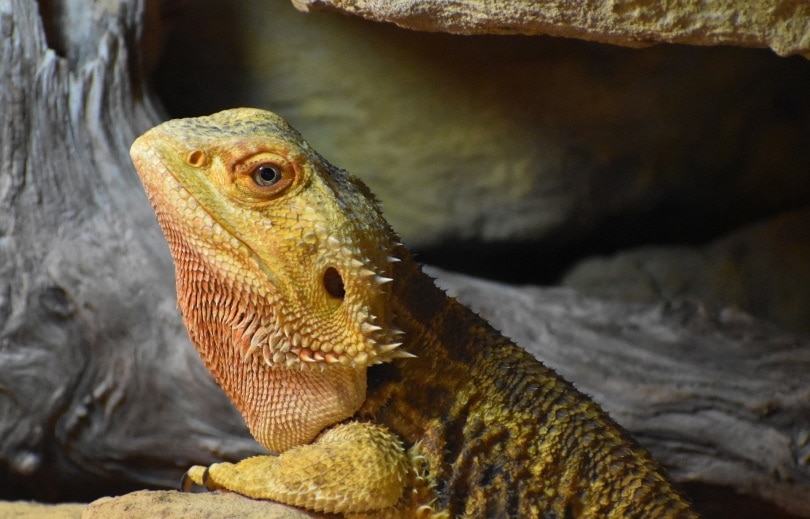
The Leather Back Bearded Dragon is a Bearded Dragon morph that has a smooth back. While this type of Beardie does still have spikes on the sides and head, it does not have any spines on the back. As a result of this morph, the colors of the Bearded Dragon can appear more vivid, which can lead to some appealing-looking pets.
Because the Leather Back Bearded Dragon is a morph of a standard Bearded Dragon, they have the same care requirements as other Beardies, and they usually have the same lifespan of about 10 to 12 years when kept in ideal conditions.
Quick Facts about Leather Back Bearded Dragons
| Species Name: | Pogona vitticeps |
| Common Name: | Leatherback Bearded Dragon |
| Care Level: | Medium |
| Lifespan: | 10 – 12 years |
| Adult Size: | 16 – 22 inches |
| Diet: | Roaches, worms, fruit, veg |
| Minimum Tank Size: | 40 gallons |
| Temperature & Humidity | 90°F – 93°F
30% – 60% |
Do Leather Back Bearded Dragons Make Good Pets?
Bearded Dragons are often said to be the best beginner reptile pet. They aren’t so fragile that they are easily injured or damaged, tolerate and even enjoy being handled, and although they do require some live feeding, they don’t need to be fed pinkies or baby mice. While they do have teeth, and even Leather Back Bearded Dragons do still have some spikes, they rarely cause injury to their humans, although males do tend to bite females during mating.
They are also fascinating to keep, can lay regular clutches of eggs, and have some odd quirks like headbanging and basking.
Appearance
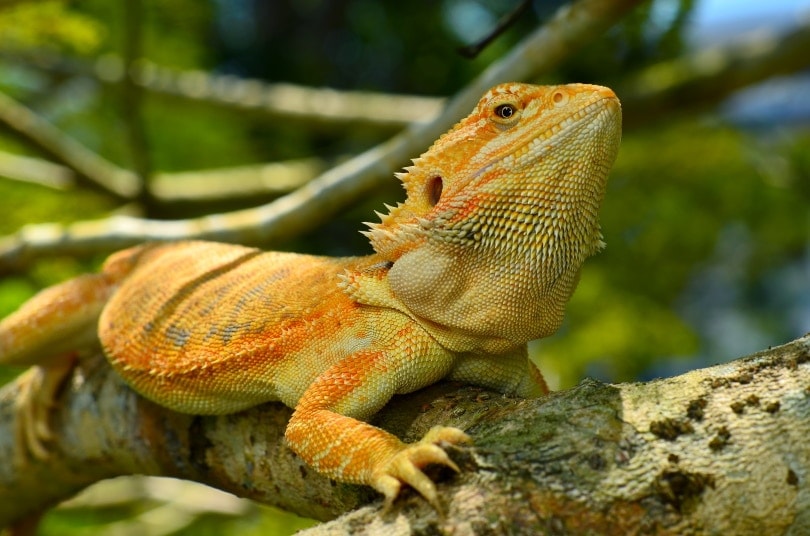
Bearded Dragons have flat bodies, stocky legs, and broad heads. They get their names from the fact that they bear a resemblance to mythical dragons, and because they have a beard of spikes that runs around the neck and down the sides of their bodies. While most Bearded Dragons also have these spikes on their backs, used as a means of defense against predators that would try to pick the lizard up and fly away with them, Leather Back Bearded Dragons lack these spines on the back, although they do have the rest of the spikes.
Leather Back Bearded Dragons can come in any color and marking of a standard morph, but the lack of spikes means that the colors pop and appear more vibrant.
How to Take Care of Leather Back Bearded Dragons
Leather Back Bearded Dragon care is relatively easy, but you do need to ensure that you provide a suitable enclosure and adequate setup so that your Beardie has an appropriate environment that closely matches what it would have in the wild.
The habitat and tank of the Bearded Dragon need to closely match the natural environment that it would live in in the wild. This typically means providing heat mats and lamps, as well as other features to achieve the ideal setup.
Tank
Bearded Dragons prefer horizontal space to vertical space and a single Beardie needs at least a 40-gallon tank. As such, the tank can take up a lot of room. The tank needs to be secure and there shouldn’t be any holes. This isn’t just to prevent the Bearded Dragon from getting out but also to ensure that the tank retains its temperature and humidity and that none of the roaches or other feeder insects are allowed to escape. The last thing you want is roaches running around your room.
Tanks will usually have a wooden base and glass panels because this design makes it easier to manage temperature and humidity. Ensure the tank is kept clean. This will mean picking out solids every day and giving the substrate and other items a deep clean every few weeks.
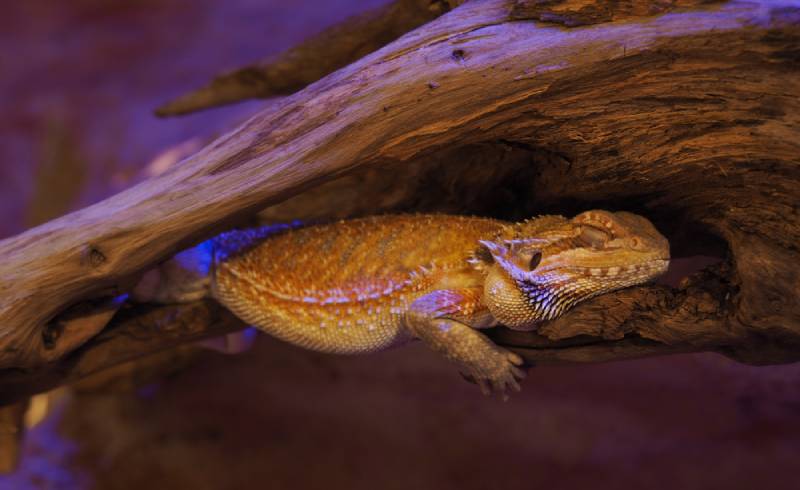
Lighting
You will need to have a good lighting setup inside the tank. During the summer months, a Bearded Dragon will want around 16 hours of UV daylight and 8 hours of dark. During winter, this can be reduced to a 12/12 cycle. It is a good idea to use a timer, rather than manually remembering to switch the lights on and off.
Heating (Temperature & Humidity)
The tank should be set up so that there is a gradient of temperature running from a cooler end to a basking end. The temperature needs to range from 80°F to 90°F in the cooler area and between 95°F and 110°F in the basking area. Use thermometers to accurately measure the temperature, and a hygrometer to help determine the humidity levels in the cage. Humidity should be between 35% and 40%, ideally, but never above 55%.
Substrate
There are a number of options when it comes to choosing substrate, and there is no single best option. Sand will most closely resemble the Bearded Dragon’s natural substrate but there are concerns over impaction. Alternatively, you can use alfalfa pellets, wood chips, or even carpets or other solid substrates, although solid substrates do prevent Bearded Dragons from being able to dig.
Tank Recommendations
| Tank Type | 40-gallon glass vivarium |
| Lighting | UVA Lighting |
| Heating | Basking light |
| Best Substrate | Alfalfa pellets |
Feeding Your Leather Back Bearded Dragon
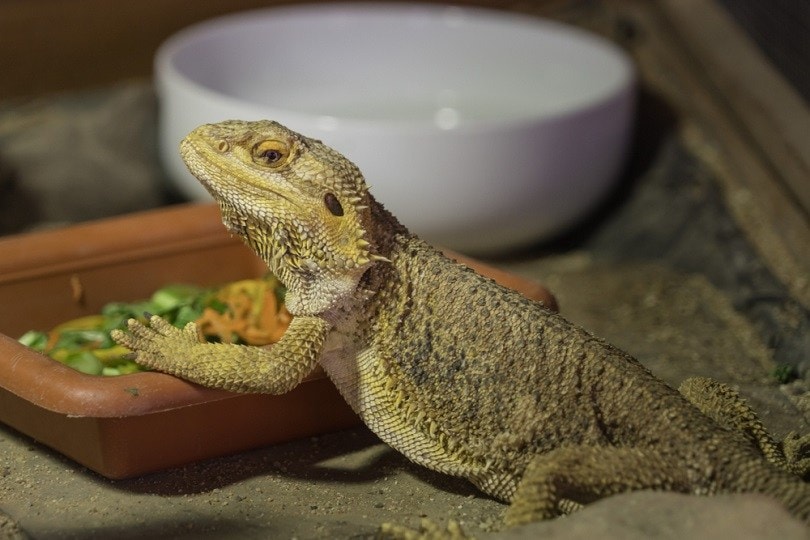
Bearded Dragons are omnivores, which means that they eat a combination of plant and animal matter. In the wild, this might include the occasional rodent, but in captivity as pets, it typically means feeding a variety of insects that have been brushed or gut loaded with supplements, as well as a selection of fresh vegetables and leafy greens.
Although water should always be provided, it can be difficult to get a Beardie to drink from a bowl, so fresh vegetables like cucumber help ensure that your lizard stays hydrated. You can also mist the food, but make sure it doesn’t go moldy when doing so. Hydration is important to all Bearded Dragons but especially to Leather Backs because they, like Silk Backs, do not retain water as well.
There will be some live feeding involved, so if you’re squeamish around insects, especially roaches or crickets, then the Bearded Dragon might not be your ideal pet choice.
Diet Summary
| Vegetables | 25% of diet |
| Insects | 75% of diet |
| Meat | 0% of diet |
| Supplements Required | Calcium and vitamin and mineral supplements |
Keeping Your Leather Back Bearded Dragon Healthy
Leather Back Bearded Dragons aren’t any more prone to disease or illness than any Bearded Dragon morph, but they do suffer poor water retention. This means that they are naturally more likely to suffer dehydration, so you will need to take steps to ensure that your Leather Back is getting enough water and retaining it. Beardies struggle with standard water bowls so find a shallow bowl that is easy to drink from. You can also mist your lizard’s head a couple of times a week to encourage it to drink, and some herpetologists recommend providing a water bath two or three times a week because this will help get some water into your Beardie.
Another issue with poor hydration is that it can lead to stuck sheds. Again, a regular water bath and misting can help ensure that the shed skin is removed more easily.
Lifespan
One of the reasons that Bearded Dragons make popular pets is that they do have a relatively long lifespan. With good care and barring any accidents or unforeseen illnesses, you can expect a Leather Back Bearded Dragon to live for between 10 and 12 years, possibly even a little longer.
Breeding
Leather Back Bearded Dragons are a popular morph because they are somewhat unusual, and some owners and breeders intentionally breed Leather Backs to continue the morph. Because of the way morphs and breeding work, breeding two Leather Backs will lead to the birth of Silk Backs. Breeding a single Leather Back with a normal Beardie will yield a clutch consisting of Leather Backs and normies, but no Silk Backs.
If you intend to breed your Beardies, you will need to offer somewhere for the female to bury her clutch, and to have the best chance of the clutch surviving, you will need to remove the eggs and hatch them in an incubator. It is also worth noting that a female can lay unfertilized eggs that will not hatch.
Are Leather Back Bearded Dragons Friendly? Our Handling Advice

Generally, Bearded Dragons are considered friendly lizards. They will tolerate handling, and, with regular handling, some will actively seek out their owner to pick them up and pet them. It can take time to develop a bond of trust between owner and Beardie, though, so you should be prepared to put in some effort to create the owner/pet bond you want.
Obviously, not all Beardies will be friendly, and this is especially true if you adopt an older one and have no idea of its history. However, the spikes and teeth of a Beardie do not generally hurt, so it may be possible to work with the animal and still create a bond, but it will take longer.
There is no known difference between Leather Backs and normies when it comes to friendliness and handling.
Shedding & Brumation: What to Expect
All Bearded Dragons shed. Their keratin skin doesn’t grow or stretch, and it doesn’t perpetually repair itself in the same way as the skin of people or most other animals. As such, the shedding of the skin allows a new layer of undamaged and protective skin to form. Beardies will shed once every week or two until they reach about 6 months. Between 6 months and about 12 or 18 months, they will shed every couple of weeks, and from the age of 18 months, Beardies will usually shed once or twice a year for the rest of their lives.
Beardies can be a little unpredictable with brumation. Most will not brumate until they are at least 10 months old, and some will brumate one year but not the next. Some may brumate every year, at the same time, like clockwork. Similarly, the length of brumation can also vary from one Beardie to another, lasting anywhere from a few weeks to the whole winter.
How Much Do Leather Back Bearded Dragons Cost?
Leather Back Bearded Dragons are somewhat highly sought after because their morph is unusual. Because it takes Leather Back Bearded Dragons to breed other Leather Backs and to breed Silk Backs, they can be quite difficult to get hold of and will usually cost more than a normie. Expect to pay between $100 and $200 for Leather Backs compared to around $50 for normies. More unusual morph colors can cost more still.
Care Guide Summary
- Bearded Dragons make great pets
- More unusual than standard morphs
- Colors of a Leather Back are more vivid
- More prone to dehydration than standard morphs
- More expensive than standard morphs
Conclusion
Bearded Dragons are highly regarded pets and are considered one of the best introductions to the world of lizard and reptile ownership. They tolerate being handled, are fun to watch, and although they do require some live feeding, they are generally quite easy to care for.
The Leather Back Bearded Dragon is a morph of Beardie that has spikes around the sides and on the head but does not have any spikes on the back. This enables the colors of the morph to show more clearly but it can also lead to reduced water retention, although other differences are nominal.
See also:
- Is Acrylic Paint Safe for Dog Paws? Safety Tips & Alternatives
- How Does Cat Flea Medicine Work? Vet Approved Explanation
Featured Image Credit: loco65, Pixabay

